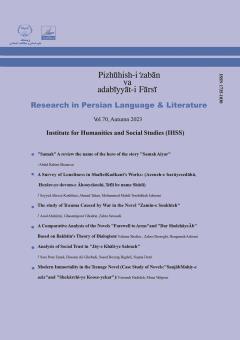One of the socio-cognitive factors that is encoded in each language using different linguistic tools is the concept of politeness. Understanding and expressing the abstract concept of politeness is only possible through objective concepts; That is, the understanding of
More
One of the socio-cognitive factors that is encoded in each language using different linguistic tools is the concept of politeness. Understanding and expressing the abstract concept of politeness is only possible through objective concepts; That is, the understanding of these abstract concepts is facilitated by expressing these concepts in an objective form. Since encoding the concept of politeness in language is a linguistic feature that shapes the surrounding environment and changes over time; In this research, we will express the concept of politeness in the Persian language objectively and concretely and we will try to answer the question that "does the Iranian Persian-speaking community use the possibilities of expressing politeness more than before and as a result if these possibilities have increased in Farsi?" In other words, "Has the Persian-speaking society become more polite?" In fact, we want to know if the Iranian society has become more polite in the past five decades or not. In order to find the answer to this question, we have to examine the cognitive and mental representation of the concept of politeness in the Persian language in order to determine whether it has had a downward or upward trend. In order to investigate this issue, several different linguistic tools, including the frequency of occurrence of conceptual metaphors, permissible metaphors, idioms, euphemisms, and figures of speech. This study can show the changes of politeness over time and the possible reasons (social, political, and cultural reasons) of these changes in the Persian language in each decade. Based on this, the cognitive model of the Persian language can be presented from the point of view of politeness. The body examined in this research includes the following: speeches of political officials, movies, press texts (newspapers and magazines) and songs. The results of the research show that rudeness has been on the rise over the past 50 years.
Manuscript profile


